Are you considering adding a Lancashire Heeler to your family? These small but sturdy dogs are known for their loyalty, intelligence, and energy. Originally bred for herding cattle in the north of England, Lancashire Heelers are now popular companion pets due to their affectionate nature and adaptability to different living situations. If you’re looking for a playful and devoted dog that won’t take up too much space, the Lancashire Heeler might be the perfect breed for you.
Breed Category: Herding
Country of Origin: United Kingdom
Average Size:25-30 cm
Average Weight:3.6-6.4 kg
Average Life Span: 12-15 years
Grooming Requirements: Low
Exercise Requirements:Moderate
History and Origin
The Lancashire Heeler is a small breed of dog that originated in the county of Lancashire, England. The breed was developed to work on farms, particularly in the herding and ratting of livestock. The Lancashire Heeler is a hardy and versatile breed that has been used for a variety of tasks throughout its history.
The exact origins of the Lancashire Heeler are not known, but it is believed that the breed was developed in the 17th century. The breed is thought to be a cross between the Welsh Corgi and the Manchester Terrier. The Welsh Corgi was used for herding, while the Manchester Terrier was used for ratting. The combination of these two breeds created a dog that was well-suited for both tasks.
The Lancashire Heeler was originally known as the Ormskirk Heeler, named after the town of Ormskirk in Lancashire. The breed was used primarily for herding cattle and sheep, as well as for catching rats and other vermin on farms. The Lancashire Heeler was also used as a watchdog, alerting farmers to any potential threats to their livestock.
In the early 20th century, the Lancashire Heeler was nearly extinct. However, a group of breed enthusiasts worked to revive the breed, and it was officially recognized by the Kennel Club in 1981. Today, the Lancashire Heeler is still a rare breed, but it is gaining popularity as a companion dog. The breed is known for its loyalty, intelligence, and affectionate nature.
The Lancashire Heeler is a small dog, standing at around 10-12 inches tall and weighing between 6-13 pounds. The breed has a short, smooth coat that is black and tan in color. The Lancashire Heeler is a sturdy and muscular dog, with a broad chest and strong legs. The breed is known for its agility and speed, making it well-suited for herding and other farm tasks.
In conclusion, the Lancashire Heeler is a unique and versatile breed that has played an important role in the history of farming in Lancashire. While the breed was nearly extinct in the early 20th century, it has been successfully revived and is gaining popularity as a companion dog. The Lancashire Heeler is a loyal and affectionate breed that is
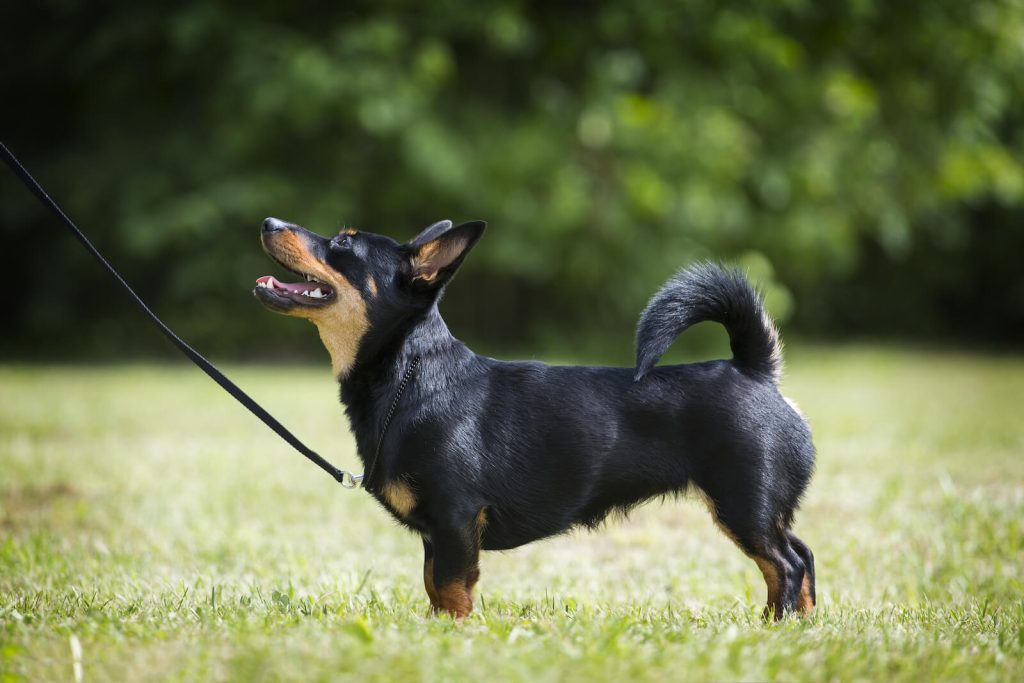
Size and Breed Category
The Lancashire Heeler is a small breed of dog that originated in Lancashire, England. They are classified as a toy breed and are known for their compact size and sturdy build. The average height of a Lancashire Heeler is between 25-30cm and they typically weigh between 3-6kg. Despite their small size, they are known for their agility and athleticism. They have a short, smooth coat that comes in a variety of colours including black and tan, liver and tan, and red. The Lancashire Heeler is a highly intelligent breed and is known for their loyalty and affection towards their owners. They are also known for their high energy levels and require regular exercise to keep them healthy and happy.
The Lancashire Heeler is a herding breed and was originally used to drive cattle to market. They are known for their strong work ethic and are highly trainable. They are also known for their independent nature and can be stubborn at times. The Lancashire Heeler is a highly adaptable breed and can thrive in both urban and rural environments. They are also known for their excellent watchdog abilities and will bark to alert their owners of any potential danger. Overall, the Lancashire Heeler is a small but mighty breed that is well-suited for active individuals or families who are looking for a loyal and affectionate companion.
Fur Length and Colour
The fur of the Lancashire Heeler is short and dense, providing excellent protection against the harsh weather conditions of the northern English countryside. The fur is smooth to the touch and lies close to the body, giving the breed a sleek and streamlined appearance. The fur is typically black or liver in colour, with tan markings on the legs, chest, and face. The tan markings are usually a rich, warm shade that contrasts beautifully with the darker fur. The Lancashire Heeler’s fur is easy to maintain and requires minimal grooming, making it an ideal choice for busy owners who want a low-maintenance pet.
The Lancashire Heeler’s fur is an important part of its overall appearance and serves a practical purpose as well. The short, dense fur helps to keep the dog warm in cold weather and protects it from rain and wind. The fur is also resistant to dirt and debris, which is important for a breed that was originally used for herding and hunting. The black or liver colour of the fur is a distinctive feature of the breed and adds to its unique character. The tan markings on the legs, chest, and face are a defining characteristic of the Lancashire Heeler and help to distinguish it from other breeds. Overall, the fur of the Lancashire Heeler is an important part of its identity and contributes to its charm and appeal.
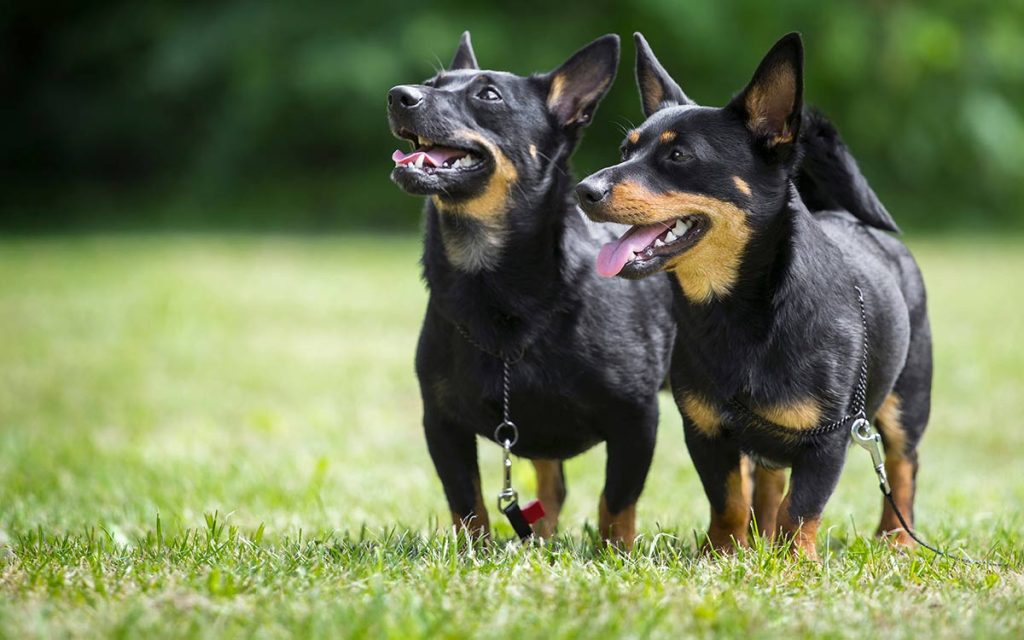
Termperament and Trainability
The Lancashire Heeler is a breed that is known for its high energy and lively temperament. They are a very active breed that requires plenty of exercise and mental stimulation to keep them happy and healthy. They are also very intelligent and quick to learn, making them an excellent choice for owners who are looking for a dog that is easy to train. However, they can be quite stubborn at times, so it is important to be patient and consistent when training them. Overall, the Lancashire Heeler is a fun-loving and affectionate breed that makes a great companion for active families.
When it comes to trainability, the Lancashire Heeler is a breed that is known for its intelligence and eagerness to please. They are quick learners and respond well to positive reinforcement training methods. However, they can be quite independent at times, so it is important to establish yourself as the pack leader early on in their training. They also have a strong prey drive, so it is important to socialize them with other animals from a young age to prevent any potential aggression towards smaller pets. With the right training and socialization, the Lancashire Heeler can make a loyal and obedient companion for many years to come.
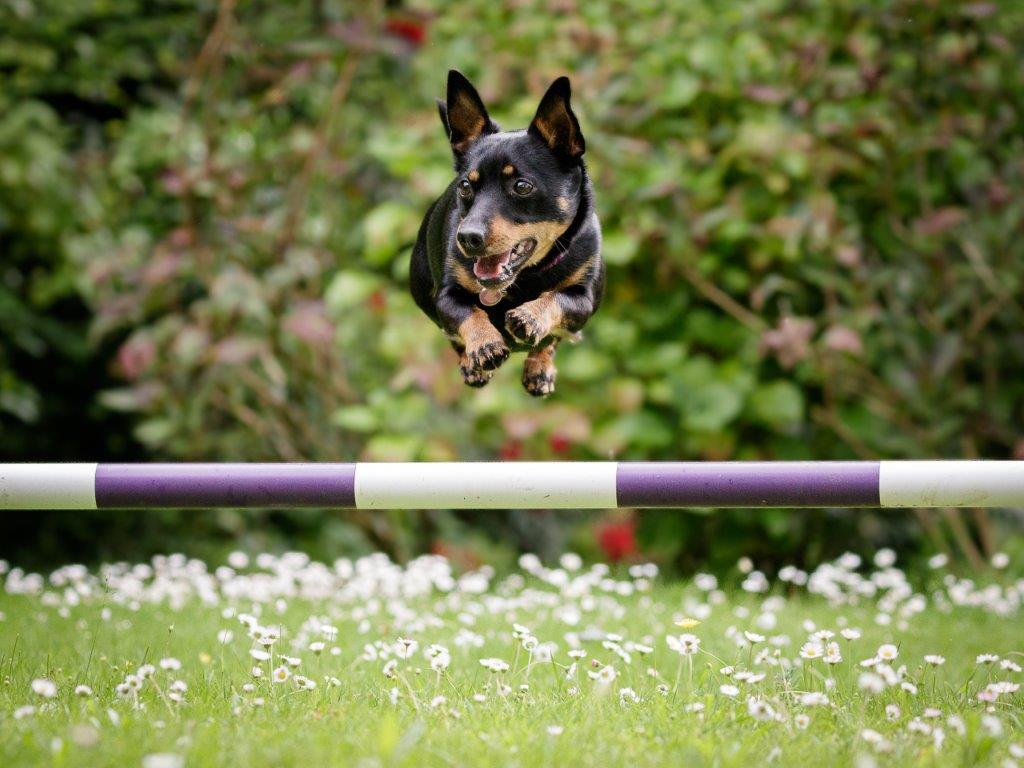
Known Health Conditions
Lancashire Heelers are prone to certain health conditions that owners should be aware of. One of the most common issues is patellar luxation, which occurs when the kneecap dislocates from its normal position. This can cause pain, limping, and difficulty walking. In severe cases, surgery may be necessary to correct the problem. Another condition to watch out for is hip dysplasia, which is a genetic disorder that affects the hip joint. This can lead to arthritis, pain, and difficulty moving. Regular exercise and a healthy diet can help prevent hip dysplasia, but in some cases, surgery may be necessary to alleviate symptoms.
Another health concern for Lancashire Heelers is progressive retinal atrophy (PRA), which is a degenerative eye disease that can lead to blindness. This condition is inherited and cannot be cured, but early detection can help slow its progression. Other eye problems that can affect Lancashire Heelers include cataracts and glaucoma. Regular eye exams can help catch these issues early and prevent further damage. Additionally, Lancashire Heelers may be prone to allergies and skin irritations, which can cause itching, redness, and hair loss. A veterinarian can help diagnose and treat these conditions with medication and dietary changes.
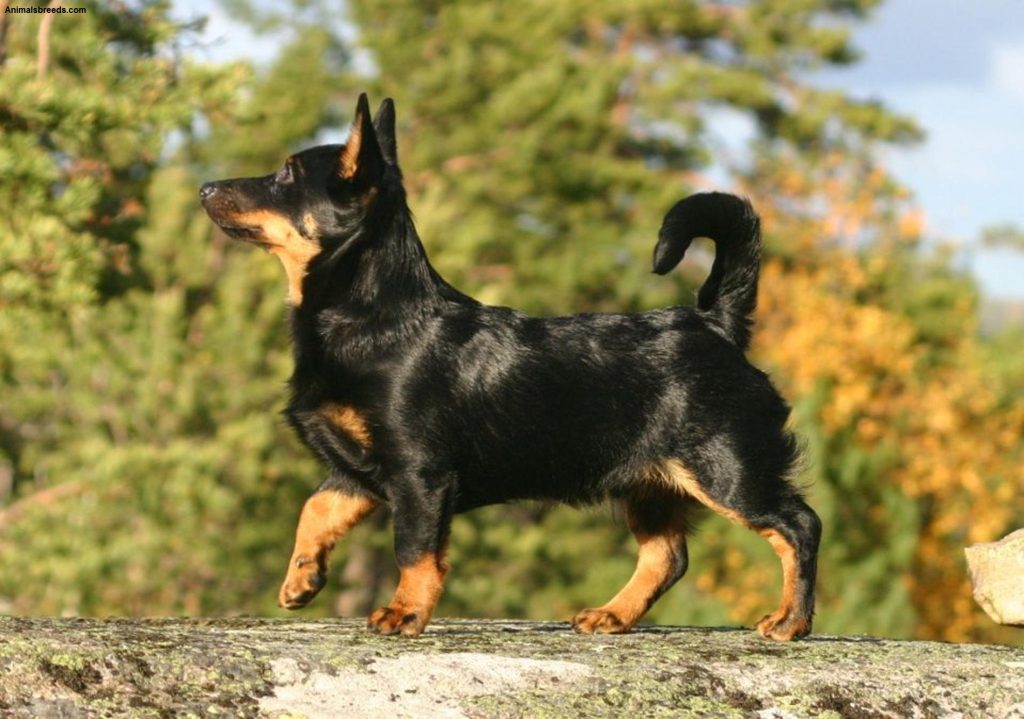
Openness to Strangers
Lancashire Heelers are known for their friendly and welcoming nature towards strangers. They are a breed that is always eager to meet new people and make new friends. This trait makes them excellent companions for those who enjoy socializing and meeting new people. Lancashire Heelers are also very curious and inquisitive, which means they are always interested in learning about new things and exploring new places. This makes them great dogs for those who enjoy outdoor activities and exploring new areas.
Despite their friendly nature, Lancashire Heelers can be quite reserved when it comes to showing affection. They are not overly affectionate dogs and prefer to show their love through actions rather than words. This can make them a bit challenging to train, as they can be stubborn and independent at times. However, with patience and consistency, they can be trained to be obedient and well-behaved dogs. Overall, Lancashire Heelers are a great breed for those who are looking for a friendly and curious companion that is always eager to explore and learn new things.
Playfulness Level
The Lancashire Heeler is a highly energetic and playful breed of dog. They are known for their love of play and their ability to keep their owners entertained for hours on end. Whether it’s playing fetch, chasing after a ball, or simply running around in circles, these dogs are always up for a good time. They are also very social animals and enjoy spending time with their owners and other dogs. This makes them a great choice for families with children or other pets, as they are always eager to play and interact with others.
Despite their small size, the Lancashire Heeler is a very active breed of dog. They require plenty of exercise and mental stimulation to keep them happy and healthy. This means that they need to be taken on regular walks and given plenty of opportunities to run and play. They also enjoy learning new tricks and commands, so training sessions can be a great way to keep them mentally stimulated. Overall, the Lancashire Heeler is a fun-loving and playful breed of dog that is sure to bring joy and laughter to any household.
Suitability as a Pet for Children
Lancashire Heelers have a friendly and affectionate nature, making them a great choice as a pet for children. They are also highly intelligent and easy to train, which can be beneficial for families with young children who want to involve their pet in activities. Additionally, Lancashire Heelers are known for their loyalty and protective instincts, which can provide a sense of security for children. However, like all dogs, they require proper socialization and training to ensure they behave appropriately around children.
Exercise Needs
Lancashire Heelers require a moderate amount of exercise to maintain their physical and mental health. As an active breed, they enjoy daily walks and playtime in a secure, fenced yard. A minimum of 30 minutes of exercise per day is recommended, but they will happily engage in more vigorous activities such as hiking, running, and agility training. It is important to note that Lancashire Heelers have a strong herding instinct and may try to herd other animals or children during playtime, so supervision is necessary. Additionally, mental stimulation through training and interactive toys is essential to prevent boredom and destructive behavior.
Regular exercise is crucial for the Lancashire Heeler’s overall well-being. Lack of physical activity can lead to obesity, which can cause health problems such as joint pain and heart disease. In addition to daily exercise, Lancashire Heelers benefit from participating in dog sports such as obedience, rally, and flyball. These activities provide mental stimulation and strengthen the bond between the dog and their owner. It is important to tailor the exercise routine to the individual dog’s needs and abilities, as some Lancashire Heelers may have health issues that limit their activity level. Consulting with a veterinarian and a professional dog trainer can help create a safe and effective exercise plan.
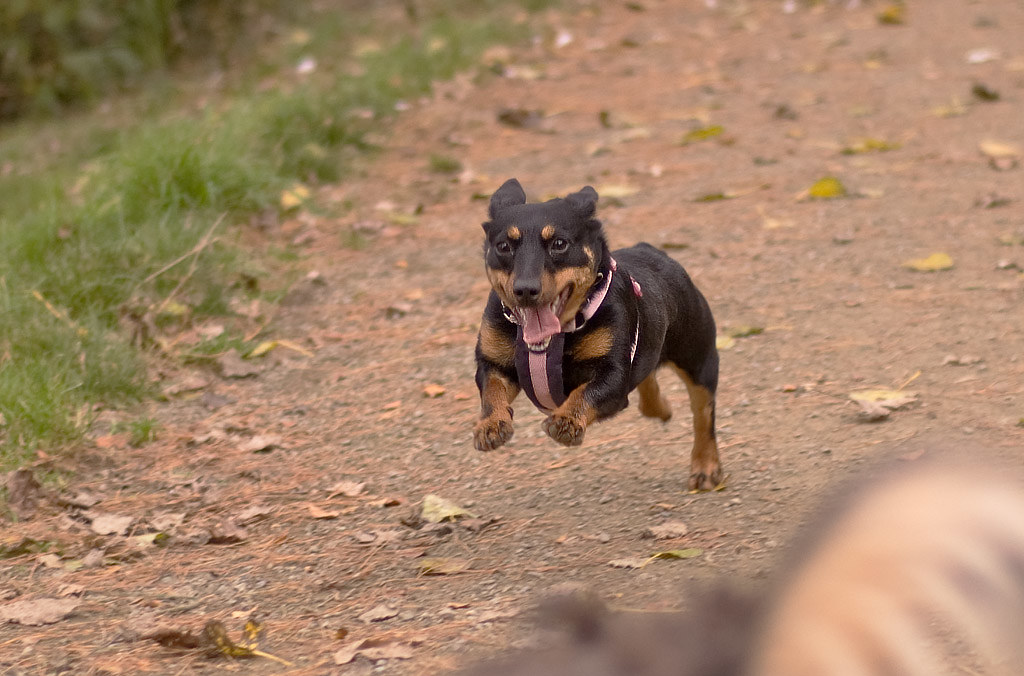
Suitability for a Multi-Pet Family
Lancashire Heelers have been known to coexist peacefully with other pets in the household. They are generally friendly and sociable, and with proper socialization and training, they can get along well with other dogs, cats, and even smaller animals like rabbits or guinea pigs. However, as with any breed, individual temperament and personality can vary, so it’s important to introduce them to other pets slowly and carefully to ensure a positive outcome.
Housing Requirements
Lancashire Heelers require a living space that is suitable for their active and energetic nature. They need a home with a secure and spacious garden where they can run around and play freely. The garden should be fenced to prevent them from wandering off and getting lost. Additionally, they require a comfortable and warm indoor space where they can rest and sleep. The indoor space should be well-ventilated and have enough room for them to move around comfortably. It is also important to provide them with a comfortable bed and toys to keep them entertained.
In terms of feeding, Lancashire Heelers require a balanced and nutritious diet that meets their energy needs. They should be fed twice a day with high-quality dog food that is appropriate for their age, size, and activity level. It is important to avoid overfeeding them as they are prone to obesity. Fresh water should be available at all times, and their feeding bowls should be cleaned regularly to prevent the growth of bacteria. Additionally, Lancashire Heelers require regular exercise to maintain their physical and mental health. Daily walks and playtime in the garden are essential to keep them happy and healthy.
Summary
Lancashire Heelers make great pets for active families who enjoy spending time outdoors. They are energetic and require regular exercise, but are also loyal and affectionate companions. With proper training and socialization, they can get along well with children and other pets. Their small size makes them suitable for apartment living, but they also enjoy having a yard to play in. Overall, Lancashire Heelers are a great choice for those looking for a lively and loving addition to their family.
Lancashire Heeler Dog FAQS
Lancashire Heelers are intelligent and eager to please, making them relatively easy to train. Consistency and positive reinforcement are key.
Lancashire Heelers can adapt to apartment living as long as they receive enough exercise and mental stimulation.
Yes, Lancashire Heelers are known to be good with children and make great family pets.
Lancashire Heelers can get along with other pets if socialized properly from a young age. However, they do have a high prey drive and may chase smaller animals.
Lancashire Heelers are generally healthy, but can be prone to certain health issues such as hip dysplasia and patellar luxation. Regular vet check-ups are recommended.
Lancashire Heelers have a short, dense coat and do shed moderately. Regular brushing can help control shedding.
Lancashire Heelers have a lifespan of 12-15 years on average.
Lancashire Heelers are an active breed and require at least 30-60 minutes of exercise daily.
Lancashire Heelers grow to an average height of 25-30 cm.
The average weight of a Lancashire Heeler is between 5-10 kg.
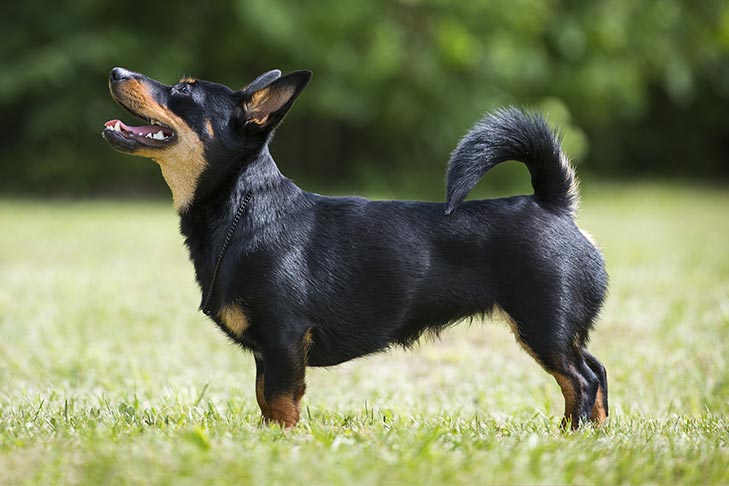
Have you got any lancashire puppies available,